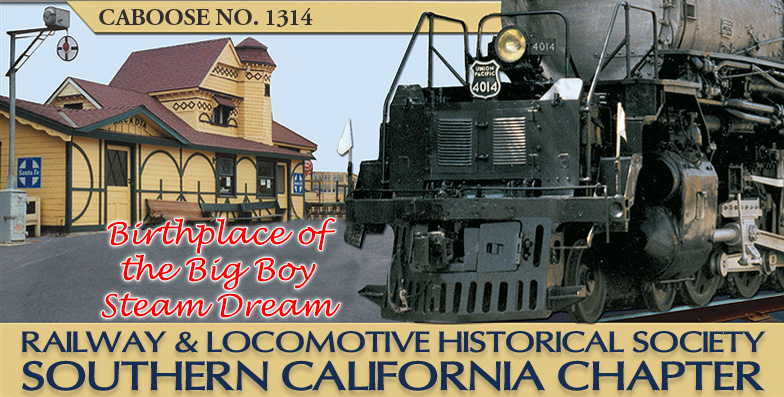Santa Fe Caboose No. 1314
A Brief History Of This Car
The caboose was a home away from home for the train crew. It contains bunks, tables, stove, ice chest and toilet facilities and a desk where the freight conductor handled his paper work. The cupola (the top extension viewpoint of some cabooses) afforded the brake man a clear view of the train ahead. American Car & Foundry (ACF) was contracted by Santa Fe to rebuild old box cars into caboose cars and No. 1314 was one of those cars completed in 1923. This Santa Fe caboose is typical of the way cars used on freight trains of the 1920-1930 era. No. 1314 was built by ACF in 1923 and was retired in 1955.
The little shanty that used to trail faithfully after every string of freight cars, like many other railroad scenes, has undergone many changes in the past hundred years.
The box-like shelters train crews used to build to shield their cooking fires on spare platform cars in the mid 1800s, the converted box cars with sliding doors used around the turn of the century, the cupola-topped wooden cabooses popular after World War I, gave way to ever more modern, efficient and better-equipped cabooses. It also provided seats and bunks for "drovers" that were required for every shipment of live stock.
The caboose was created out of the necessity for the railroad worker to have adequate accommodations while working on the railroad. The interior of the caboose afforded the railroad worker many amenities to bring their life on the rails to more livable standards. Benches to rest on, feather dusters, coalbins cast iron stoves, kerosene lamps and the lazy board where some of these items. The more modern caboose has become a rolling office, efficient and functional, vastly different from its forebears. The origin of the caboose is uncertain. Even its birthdate is unknown. The most generally accepted story of its beginning is that a man named Nat Williams - a freight conductor on the Auburn & Syracuse Railroad during the 1830s - made it his custom to sit in the last car of a freight train on a box or barrel and direct the train’s operation. As trains and runs grew longer, some railroads provided platform cars for their train crews, and eventually converted box cars for crews to use as shelters. Today, the caboose has all but disappeared from the rails. There is no longer a need for long term living on the railways due to faster trains and the caboose has been replaced by a flashing rearend devise or “FRED” as it is commonly known as.
Theories On How The Caboose Got Its Name
Even the origin of the word caboose is disputed. Railroad historical authority D. L. Joslyn, a retired Southern Pacific draftsman, documents its use back to the days of the early sailing vessels, when sailors customarily set up a fireplace or stove on ships’ decks. To protect their fires and provide shelter for them-selves, seamen erected boxes over their fireplaces. These shelters were known to the Dutch as kabuis, to the Danes as kabys, the Swedes as kabysa, and Germans as kabuse. Another theory holds that the word originated in Texas, Americanized from the Spanish word calabozo, meaning jailhouse. These ideas seem to have some merit.
In the eastern portion of the U.S., the car at the end of the train was called a “way car”, “cabin car”, “conductor’s van”, “accommodation car”, “train car”, “brakeman’s cab”, “shanty”, or “crummy”. Even today, many eastern railroads call them way cars, with a few referring to them as accommodation cars. Only in the West has the crew car been known almost universally as the caboose.




